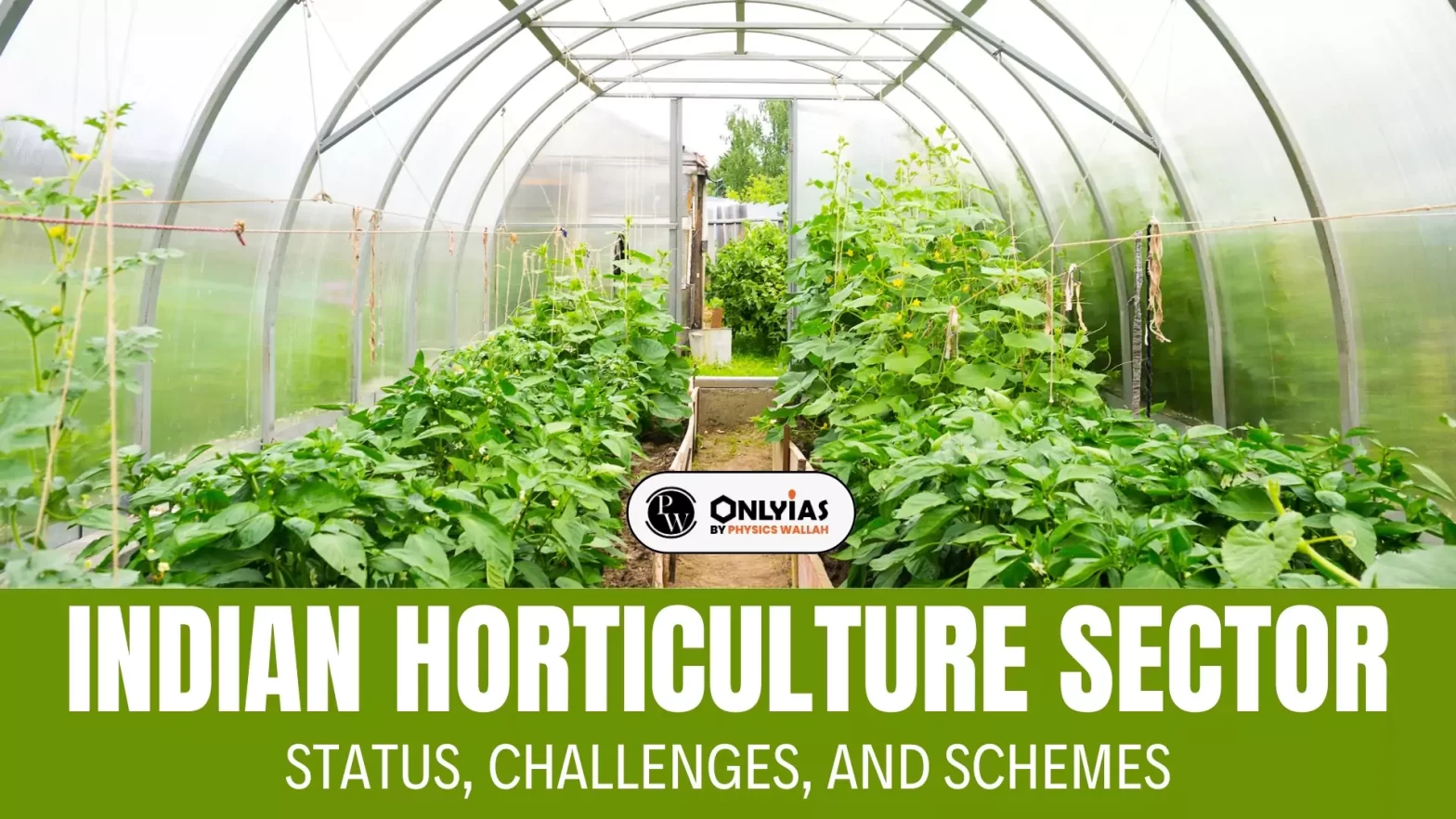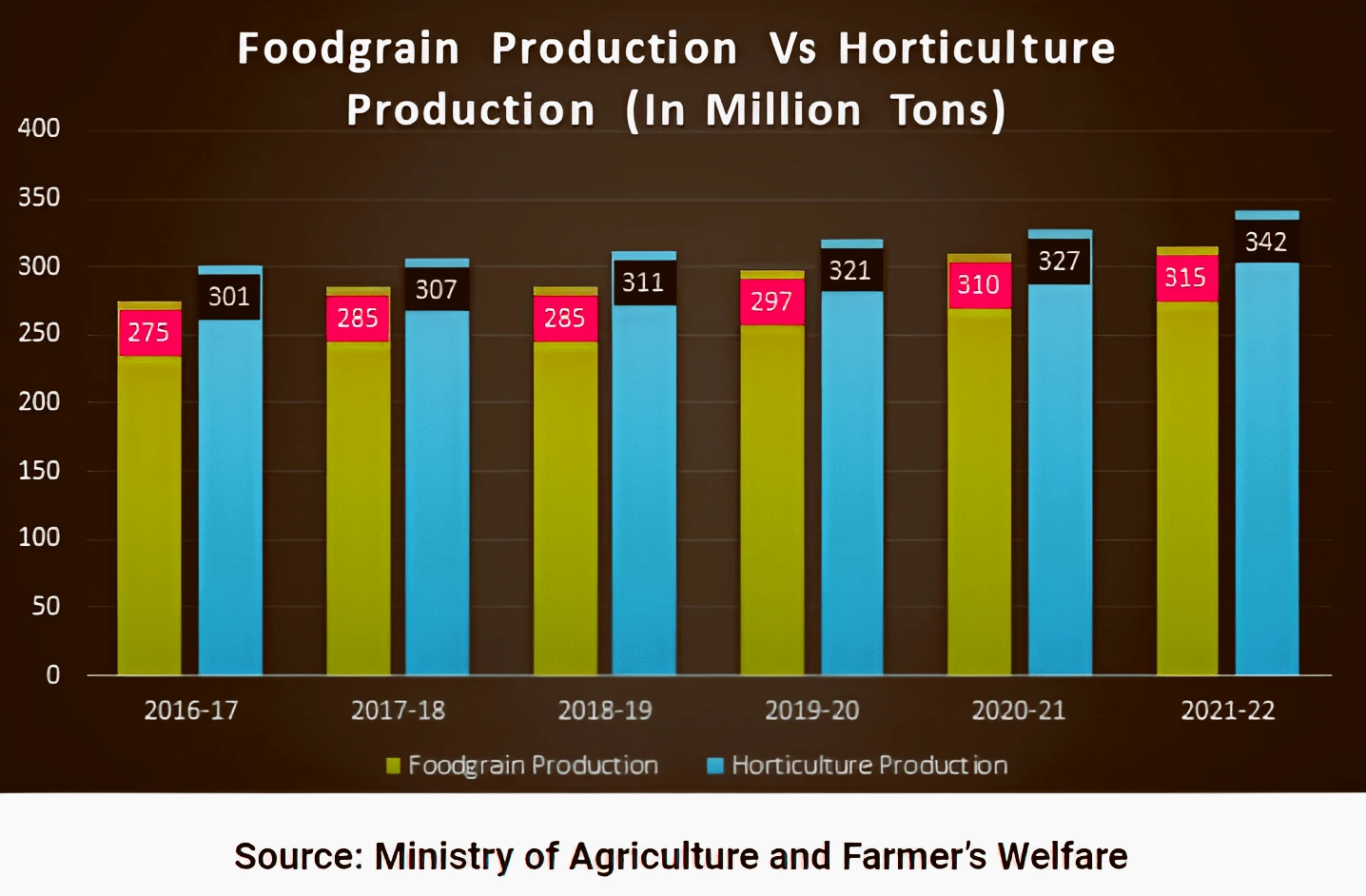![]() 19 Jan 2024
19 Jan 2024

This article is based on the news “Ministry of Agriculture and Farmers’ Welfare releases third advance estimate of area and production of various horticultural crops for the year 2022-23” which was published in the PIB. The Ministry of Agriculture and Farmers’ Welfare released the Third advance estimate of area and production of various horticultural crops for the year 2022-23.
| Relevancy for Prelims: Horticulture Production in India, Ministry of Agriculture and Farmers’ Welfare, National Income, GDP, Value Added (GVA), National Horticulture Board (NHB), NABARD, and e-NAM initiative.
Relevancy for Mains: Indian Horticulture Sector: Status, Significance, Challenges, Schemes, and Way Forward. |
|---|
| Total Horticulture Production | 2021-22 (Final) | 2022-23 (Second advance Estimate) | 2022-23 (Third advance Estimate) |
| Area (in million hectares). | 28.04 | 28.12 | 28.34 |
| Production (in million tonnes). | 347.18 | 351.92 | 355.25 |
Branches of Horticulture
|
|---|
 Industrial development: Horticulture plants directly or indirectly serve as raw material for many industries.
Industrial development: Horticulture plants directly or indirectly serve as raw material for many industries.
Government Interventions in Indian Horticulture Sector
|
|---|
| The Codex Alimentarius or “Food Code” is a collection of standards, guidelines and codes of practice adopted by the Codex Alimentarius Commission. |
|---|
| Must Read | |
| NCERT Notes For UPSC | UPSC Daily Current Affairs |
| UPSC Blogs | UPSC Daily Editorials |

<div class="new-fform">
</div>